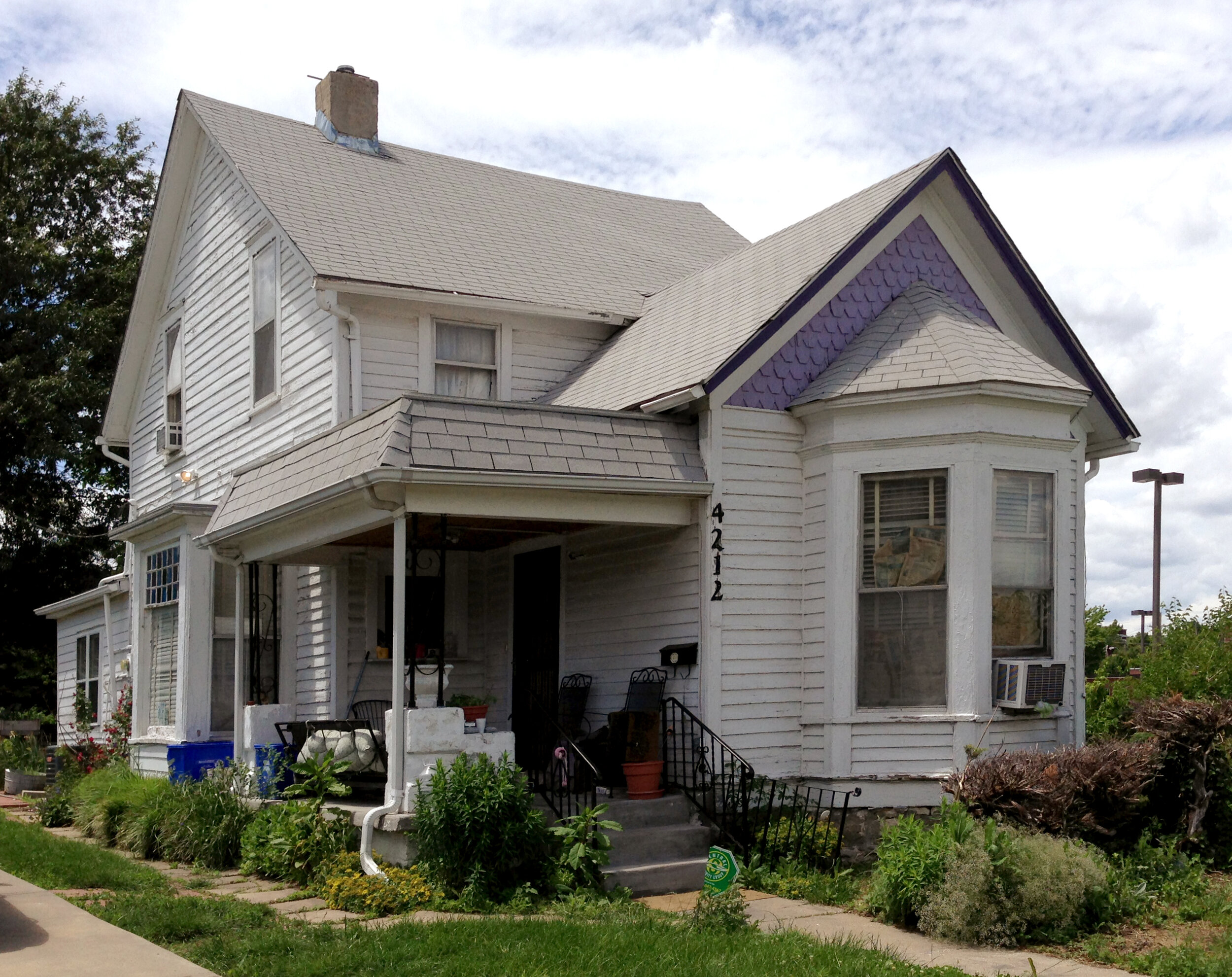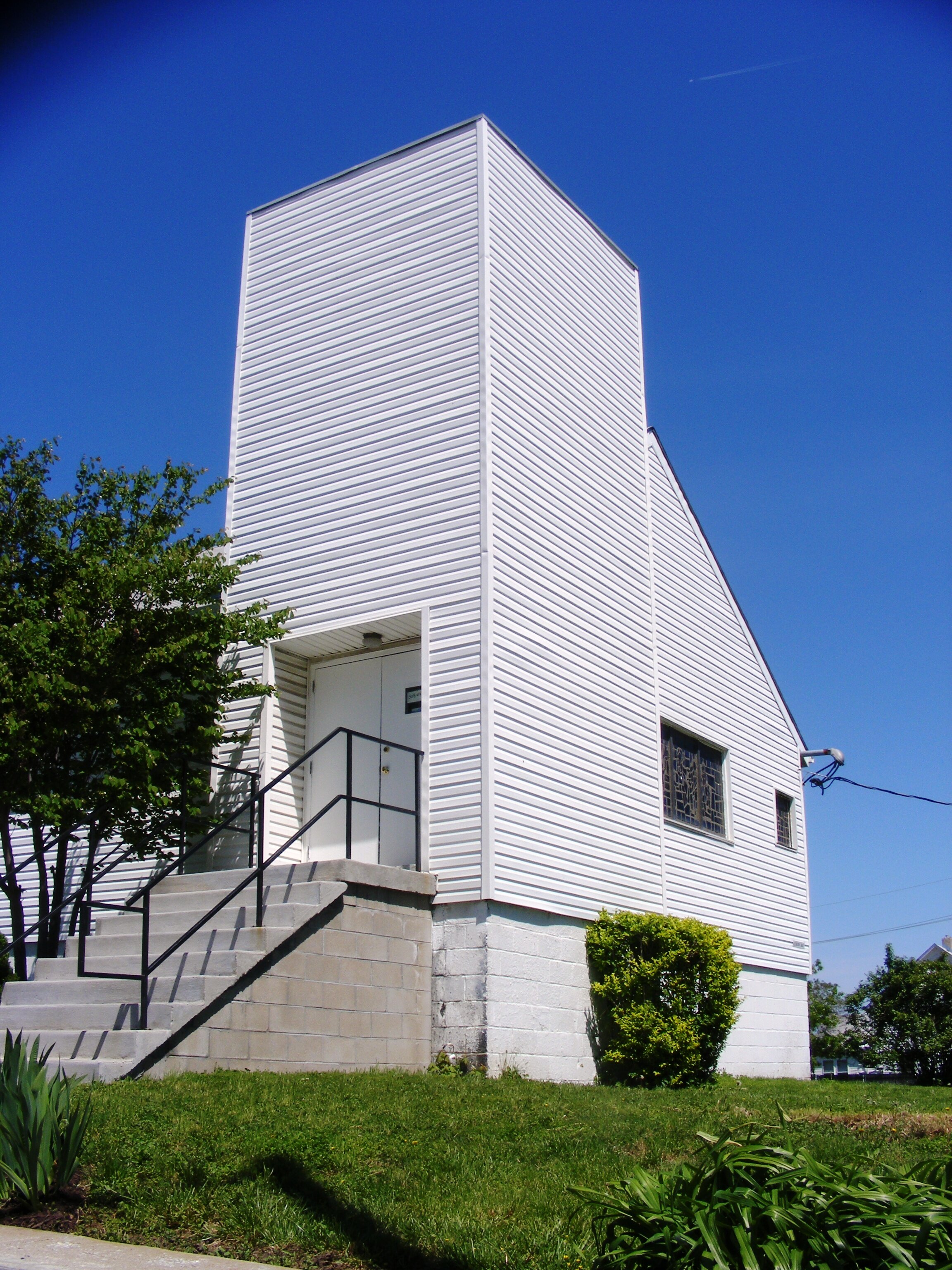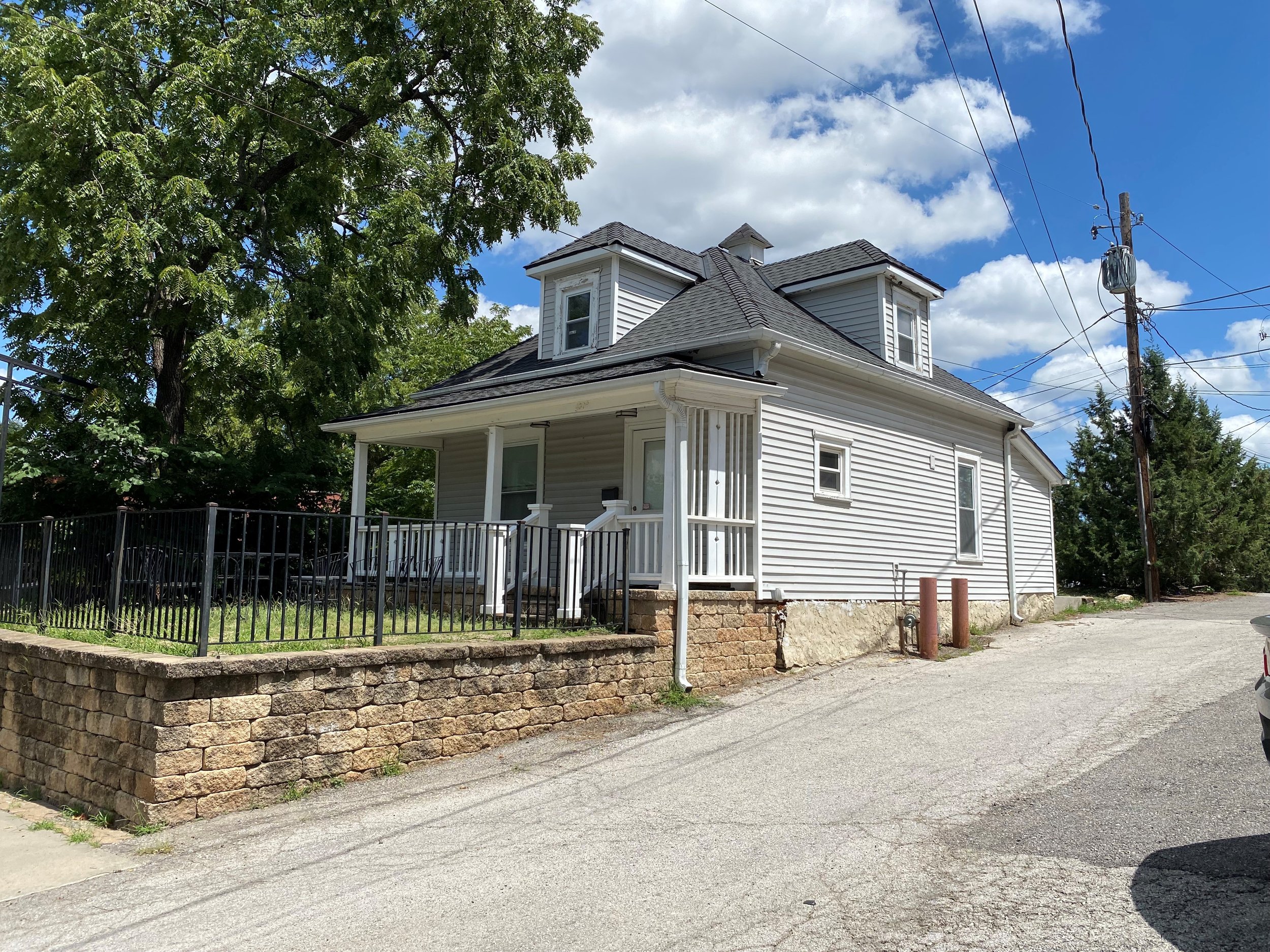
Steptoe Neighborhood
Steptoe Neighborhood
Steptoe is the name of an antebellum African American neighborhood located in the historic Westport district. Segregation in Kansas City dispersed African Americans into segregated locations. In the Westport area, those boundaries were roughly Jefferson to Wornall, from 42nd to 44th Streets. Steptoe was a collection of neat clapboard houses tucked along narrow streets between Westport Road and the Country Club Plaza. Its center was at the corner of Pennsylvania Avenue and 43rd Terrace. The name "Steptoe" was spelled out in blue and white ceramic tiles set in the pavement at each corner.
Slavery in Westport was a unique institution by the fact that John McCoy, a founder of and trade store and Westport Landing, established a way for slaves in the area to buy their freedom. Slaves could earn $3.00 per week to work off repaying the price their masters had paid for them. This, coupled with the fact that the founding families of Westport set aside land for former slaves to live, makes this neighborhood unique in our city’s history.
The area that came to be called Steptoe was platted as Pate’s Addition in 1857. It was called Pate’s Addition after Henry Clay Pate. The 1925 Tuttle & Pike Atlas of Kansas City lists Pate's Addition and Steptoe Street, which ran from Broadway to Summit Streets. Land speculation along the Santa Fe Trail ran rampant, which would have made the land that became Steptoe a hot commodity. Since Pate wasn’t particularly wealthy, he may have asked for funds for his development came from well-heeled family friends back in Virginia. The family friends were named—you guessed it—Steptoe. That explains why Steptoe Street (W. 43 Terrace since 1933) ran through the heart of Pate’s Addition. But Pate wasn’t around long enough to prosper from his investments. He returned to Virginia, joined the Confederate Army and was killed in battle in 1864.
Stories in The Kansas City Star have reported that, "In the 30s, many Steptoe residents were chauffeurs, maids or cooks who worked for wealthy families on the Plaza and farther south. But there were also railroad workers, porters, cooks, plumbers, teachers and other professionals." In its time, Steptoe in Westport was "a little island," surrounded by white neighborhoods. Longtime residents talk about having white, Jewish, German, Italian, Hispanic, and Swedish people for neighbors. Though there were segregationist attitudes, there was little racial tension.
Institutions were created to serve the location African American population. Penn School at 4237 Pennsylvania was founded in 1868 for the expressed purpose of educating black children. The three-room school for grades one through seven was the first school of its kind established west of the Mississippi River. The school was closed on May 26, 1955 and the building burned in 1967.
Two churches were located in the area for the African American residents, Saint Luke’s African American Methodist Episcopal (AME) church, organized in 1879 and St. James Baptist, organized 1883. St. Luke’s was demolished in 2003 and St. James is the only remaining institution remaining in the Steptoe area.
Westport was a trading staple in the early days of Kansas city. The origins of Steptoe are estimated to be around 1850. White proprietors of the early days of Westport often owned slaves including the likes of John Wornall and John Calvin McCoy. Thanks to men like McCoy, Westport’s institution of slavery differed from many other places. It is said that slaves were often allowed to “buy” their right to freedom with an allowance of $3.00 a week. White slave owners of Westport then set aside land between modern day Jefferson, Wornall, 42nd and 44th street for these newly freed men and their families to live.
Steptoe residents would go on to build the Penn School in 1868, the first schoolhouse for African Americans west of the Mississippi River. Churches would serve as the center of the community. In 1879 Steptoe residents would build St. Luke’s African American Methodist Episcopal church. St. James Baptist was originally located at Mill & W 40th Ter in 1883, but moved to its current location at 508 W 40th St in 1938, where it still stands today.
As Steptoe continued to grow throughout the decades following the war between the states, so would the metropolitan area of Kansas City. Westport and Steptoe were annexed to Kansas city by 1900 as the population would steadily rise for the first half of the new millennium. The Kansas City Star reported, “...many Steptoe residents were chauffeurs, maids, or cooks who worked for wealthy families who lived in the plaza and further south of Westport.” The racial geography of Kansas City time and time again shows themes of African American families taking up residence in the area near, but separate from their powerful white employers.
Today, the memory of Steptoe is slowly but surely diminishing. Many African American lineages here can trace their family trees to those who lived in Steptoe. But sadly, the vast majority of what was the most historic black enclave in the city now rests underneath the ever growing St. Luke’s hospital complex. Eventually developers will pave over the area completely. Structures such as the Penn School have been demolished despite their great significance to the history of black Kansas Citians. St. James Baptist Church remains standing, yet exists vacant and waiting for likely demolition as the city continues to grow and develop. Efforts to preserve the area are effectively futile today, but the role that Steptoe played in the advancement of African Americans in Kansas City remains.
Works Cited
Maddox, Joelouis. “Taking Steps to Record Steptoe, Westport’s vanishing African American Neighborhood.” JCHS Journal, Oct. 2004.
Mason, Randy. “A village and a treasure: the almost forgotten history of an early integrated KC community,” Kansas City Star, February 5, 2022. https://www.kansascity.com/news/your-kcq/article258066698.html#storylink=cpy. Accessed February 7, 2022
Westport Historic Resources Survey. Rosin Preservation, LLC, Nov. 2017, https://www.historickansascity.org/wp-content/uploads/2018/02/Westport-Survey-Report-FINAL.11dec17-reduced-size.pdf.
Additional Content Provided by
Brendan Carnahan, student at the University of Missouri Kansas City as part of Dr. Sandra Enriquez’s Urban History Class.























